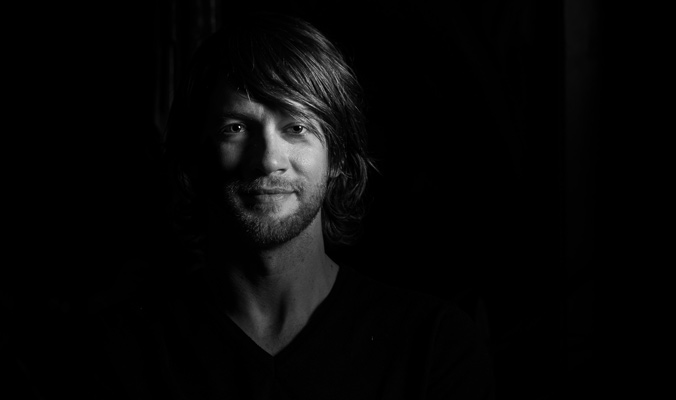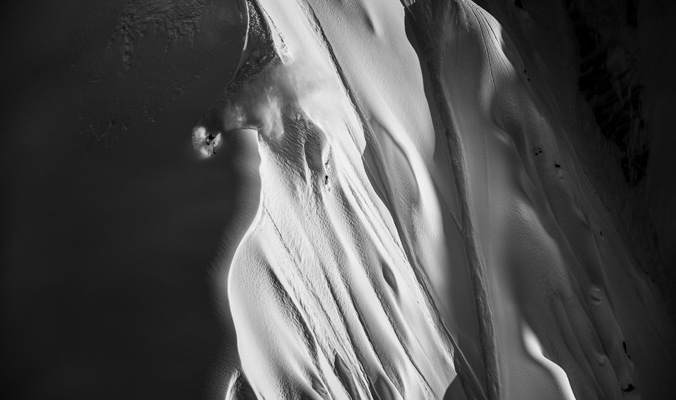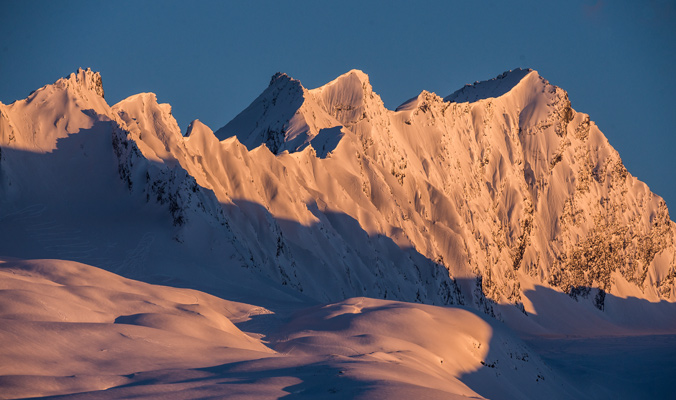Photographer Blake Jorgenson has been taking photos for a long time—before the era of digital, when the average kid still knew Fujifilm was a photography company and didn’t assume it was just a movie about the tropics. His experience has given him a perspective on communication and what it means to be an artist.
We talked with Jorgenson about film vs. digital and the importance of athlete-photographer relationships in composing a good photograph.
Backcountry Magazine: What drew you to photography as a profession?
Blake Jorgenson: When I was younger I always loved taking pictures and I never really had any intention of it becoming a career. It just evolved. I was into being a ski bum in Whistler, and I think the connection to my home and the people I met there are the main reasons that I got into photography. It has been a slow, steady evolution for almost 20 years now.
BCM: What was it about action photography that called to you over other genres?
BJ: I think you have to start out shooting what you know and love. The things I was interested in when I was younger were skiing, mountain biking, hiking and just all the amazing things that I could do in the outdoors in Whistler. Somehow the drive to want to share it with somebody was really important to me. Of course, back then it was all film and slides. There was no way to email photos, so to share photos with people was really empowering. I think I got my first photo published in Powder when I was around 20 years old. It was really exciting, that feeling of sharing your adventures with the outside world. And like I said, back then it was a big deal because someone had to invest in publishing your stuff.
BCM: Where is your favorite place to work? Why?
BJ: I have had so many amazing ski adventures around the world that are unique, but I think my favorite is at home in Whistler. It is always amazing and always where my heart is.
I am from the east, from Hamilton, just south of Toronto. I grew up with my mom—she was a single mom and we lived in these really cramped places when I grew up. She took me to Whistler when I was 16. I was like, “This is where I want to go!” I was back there a few years later.
BCM: What is the funniest thing that has happened to you while shooting?
BJ: One thing I will say about action sports is that it’s a little bit loose. It is very symbiotic. Everyone is bringing their own little piece to the table. With other genres, you are more regimented. For action sports there is a lot of freedom and movement.
BCM: What is a challenge of being an action sports photographer?
BJ: I think I struggle with how fast everything is changing. Some people embrace quick change, and I think for me, I am someone that gets settled in my ways and is systematic about things. Creatively, I am always looking for new things, but I have never been computer savvy. I am always overwhelmed by that stuff and I am more the creative person than the technical person.
BCM: How do you define your photographic style?
BJ: I shot film for a good 10 years before I got a digital camera. I think I still shoot photos like I am shooting a roll of Fuji Velvia. That was pretty much the staple for ski and snowboard photographers—heavy color saturation and rich blacks—a lot of my photos have black negative space. The composition relies on these dark, moody parts. It’s interesting because in the digital age it is the opposite. I shoot to maintain that look of Fuji Velvia that came out in 1975 or something.
In terms of content, I think that everything is very environment based, the scenes and the sunsets, they are always the star—the primary attraction—the skier or athlete really just brings the whole picture alive. The connectivity of that person with that environment is what makes the photo special.
BCM: How do you integrate safety in your photography?
BJ: Safety is incredibly important. I think that it is hard with a budget to always have safety and be aware of safety when you are trying to do everything yourself. I think the biggest danger to anybody out there is to become desensitized to the danger. I think you need to realize that there is danger, no matter how many days you have out there.
BCM: What role do you think communication plays in photography?
BJ: As a photographer, communication is your most important tool. Equipment wise, I always say that your brain is the most important piece of camera gear. You and the people that you are working with have to be in good communication. You and the athletes have to have the same thing visualized in each other’s heads. It all comes back to the fact that you are creating a shot and you are creating it with other people. If you are just standing there waiting for something to jump in front of the lens, the odds of you actually getting the photo become very slim.
Most of my great photos—when you see what they started out as—they don’t look like anything special. They become what they are because of the creative process and because of hard work. To be able to pull the camera out of the bag and take a great shot is very rare.
BCM: How has the transition to digital affected you?
BJ: It’s all about the end process, the end photograph. Film and digital are really just two different ways of getting to the same spot. If you look at a great photo now and a great photo from 1950 they should ideally look the same. I used to do a lot of darkroom stuff. I didn’t like the constraints of slide film and the strict parameters, so I did a lot of black and white prints and sent them to magazines.
I created a look for myself earlier on, so when digital came I was already on the wave of being able to have more flexibility with images. I think I did well with digital right out of the gate even though I really struggle with computers and with the technical parts of digital. I had film mastered, and analogue is how my brain works. Moving forward, I think digital is a positive thing overall because it allows everybody to be a photographer. It gives more freedom and more tools to people to learn and take better photos than what film offered.
BCM: Do you shoot film still?
BJ: Yea, I’ll shoot film and then I’ll scan it—digitize it right away. I shoot with my Hasselblad camera. The whole point is to slow down. You only get 10 shots in a roll of 120, so you have to think about what you are doing. You have to be precise, and it is easy to get carried away when you can take a ton of photos and not be fully engaged when you shoot digital. You think about Ansel Adams who hiked all around Yosemite and had five or 10 plates of glass. That was all he had for the whole day.
BCM: Do you have any tips for aspiring photographers?
BJ: I think the best thing is to always know that photography has this slow, incremental growth. I think back over the last 20 years and everything grows at the same pace every year. There are no peaks or valleys. Just slow, organic growth. That’s the best way to deal, because it is really easy to get discouraged.
BCM: What do you think of being an artists in the age of web content?
BJ: I think there is a difference between being an artist and being a content creator. Now that we have the explosion of media, there is so much required of us that is classified as content. For people who are interested in becoming professional photographers, I would say that success will be based on how you run your business, and the challenge with that is how it is unique to you.
—
To learn more about Blake Jorgenson, visit blakejorgenson.com.















Related posts:
Snow Shooter: Brian Mohr
Snow Shooter: Photographer Abby Cooper
Snow Shooter: Ian Coble
Snow Shooter: Jason Hummel